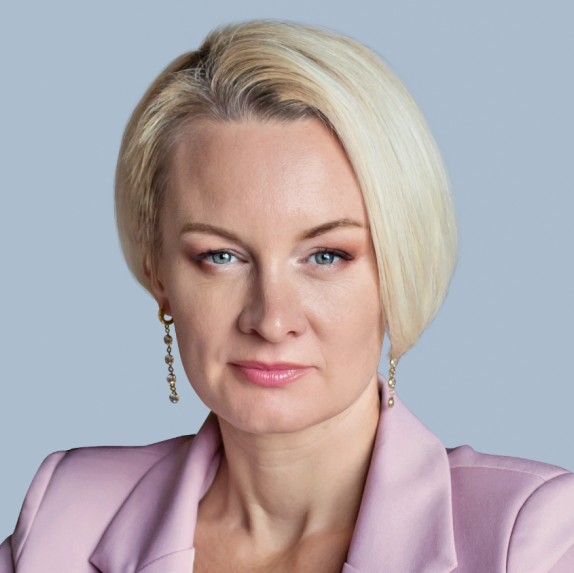The project aims to increase the detection rate of spina bifida in early pregnancy, employing artificial intelligence (AI) applied to ultrasonography data.

How neural networks help physicians detect the rare spina bifida condition during pregnancy
Find out how the Spina Bifida Foundation supports people with this disease, what the V.I. Kulakov Medical Research Center does in spina bifida treatment, and what role Yandex Cloud and the Yandex School of Data Analysis play in early diagnosis.
These are diseases rare and poorly understood, with no more than 10 cases per 100,000 people.
Full name: Federal State Budgetary Institution (FSBI) National Medical Research Center for Obstetrics, Gynecology and Perinatology named after Academician V.I. Kulakov under Ministry of Health of the Russian Federation.
Spina bifida is a rare and serious disease affecting about one in a thousand newborns. Characterized by incomplete closure of the spinal column, it may lead to leg paralysis and cause pelvic organ dysfunctions. This disease is classified as orphan, so many physicians never encounter it once in their entire career.
The Spina Bifida Foundation, V.I. Kulakov Medical Research Center, and Yandex Cloud, also engaging School of Data Analysis (SDA) students, run a software suite to help physicians diagnose spina bifida early.
A condition in which an accumulation of cerebrospinal fluid (CSF) occurs within the brain, which can inflict brain damage.
In the images, AI highlights regions of interest, so even a less experienced physician can take timely action to treat the disease, including fetal interventions.
What is spina bifida, and what makes the disease difficult to detect early in pregnancy
Spina bifida is a congenital condition in which the spine and spinal cord do not develop properly. Its most severe form, myelomeningocele, often causes disability; between 68 and 80% of people diagnosed therewith need a shunt to treat hydrocephaly.
Fetal surgeries for spina bifida have been taking place in various countries since mid-2000s. The Management of Myelomeningocele Study (MOMS) trial, published in the New England Journal of Medicine
In Russia, there are no official statistics on this disease, but according to the Spina Bifida Foundation, about 2,000 children are registered with this diagnosis. More than 200 new cases have been identified since January 2024.

Kirill Kostyukov, Head of the Ultrasound and Functional Diagnostics Department in the V.I. Kulakov Medical Research Center under the Russian Ministry of Health, expert of the Spina Bifida Foundation, at work
The abnormality is easy to miss at the first screening, at weeks 11 through 14 of pregnancy, because the fetus is small and both its spine and spinal cord are difficult to examine properly. Usually, spina bifida is found during the second screening, at weeks 19 through 21. Once detected, the condition requires urgent treatment: the time window for fetal surgery is only open until week 26.
In this article, we will tell you:
“Where spina bifida is diagnosed in the first trimester, the physician has more time to fully examine the future mother and get everything all set for in-utero spina bifida repair. Normally, the intervention takes place between weeks 22 and 26 of pregnancy. If detected in the second trimester, time limits may be challenging to fully examine the patient as part of preoperative preparation. The preparation includes specific genetic testing that must be complete before sanctioning the surgery.”
How the issue is approached
How the idea of a software for early diagnosis of spina bifida came about
The idea of using AI to diagnose spina bifida was born in a dialog between medical field experts from the V.I. Kulakov Medical Research Center and Inna Inyushkina from the Spina Bifida Foundation. This is how the project came into being, joined by Yandex Cloud experts and SDA students. The joint team developed a neural network capable of analyzing ultrasound images and detecting abnormalities early in pregnancy.
The Yandex Cloud team provided computing power and technology capabilities to develop and train AI models, and, along with with ML experts from SDA, shaped the whole logic and architecture for the system. The SDA students then built a free web application
What the Spina Bifida Foundation is about
What the Foundation does is comprehensively aiding children and adults suffering from spina bifida. Supporting families and orphanages, the Foundation aims at helping people with this diagnosis fulfill their lives in a barrier-free environment. The Foundation sees its mission in contributing to early detection of spina bifida in pregnancy, reducing the number of children born with this condition, and inspiring informed choices for the future.
The Spina Bifida Foundation runs about 15 projects, including targeted, legal, psychological, and medical assistance. Among them, in 2022, the Spina Bifida Institute
“While Down syndrome, infantile cerebral paralysis (ICP), autism specter disorders (ASD), and spinal muscular artrophy (SMA) are what most people are aware of, spina bifida remains little known even among physicians. Sometimes, they insist on terminating the pregnancy simply because they lack knowledge of modern treatments such as in-utero intervention. Among the Foundation’s beneficiaries, there are professional athletes, champions of Russia, Europe, and the World, as well as Paralympic medalists. The society needs to know that such a diagnosis is not a death sentence. With modern medicine, people with congenital spinal cord pathologies are free to live happy and fulfilling lives.”
What role V.I. Kulakov Medical Research Center plays in diagnosing and treating spina bifida
The Center is engaged in delivering complex in-utero interventions, developing techniques to train physicians, and introducing new technologies, including AI for detecting health pathologies.
Its employees are committed to international research and experience share, contributing to promotion of advanced treatment techniques with better results. In 2023, the Center’s experts, Kirill Kostyukov and Liliyana Chugunova, also fueled by the Spina Bifida Foundation, developed a refresher course for obstetricians-gynecologists and ultrasound specialists. Over 18 months, they held 24 events attended by more than 650 professionals from all regions of Russia.
What software can be of help: A neural network classifier for ultrasonography data
How we train neural networks to recognize objects
As part of project to diagnose spina bifida, we trained neural networks on qualitatively labeled ultrasound images.
V.I. Kulakov Medical Research Center is a leading medical institution, the largest in Russia among those specializing in maternity and childhood healthcare. Regarding the disease in question, the Center deals with the most complicated cases, so its experts were naturally able to collect a unique archive of 6,000 ultrasound images, 300 of which show feti with spina bifida. This dataset is of exceptional importance, as such data for an orphan disease are extremely difficult to gather.
CVAT (Computer Vision Annotation Tool) is an open source tool used for data labeling in computer vision tasks. Users can highlight regions of interest in images and videos, as well as add tags and labels, enjoying accurate segmentation and standardized labeling.
At first, the data were labeled (highlighting regions of interest, and assigning tags for the ultrasound scanning planes) by medical students. With cloud tools such as CVAT, they were able to achieve distinct segmentation and label pixels in the images accurately. The labeled images were then validated by physicians, and the final dataset was provided to Yandex Cloud and SDA experts to train AI models.
Moving forward, the data will be pre-labeled accordingly by AI models trained in the project, for human physicians to verify the labeling, while the joint Yandex Cloud and SDA team will provide further tuning for the models. This is called AI-assisted data labeling.
Retina AI and Celsus
Retina AI and Celsus are two other projects engaging AI to diagnose diseases. Retina AI has developed a cloud-based AI app that helps physicians detect retinal issues in fundus camera images. Celsus has created a system able to identify dozens of diseases via analyzing images from mammography, fluoroscopy, and CT of the chest and spinal cord.
Why training a neural network to identify pathologies is challenging
Axial plane and sagittal plane are terms used in anatomy and medical imaging to describe two different types of body cross-sectional images (slices). The former is for transverse (horizontal) slice, while the latter is for longitudinal (vertical) one.
Spina bifida is a rare pathology, which is why collecting sufficient data to train models is a challenging task. Ultrasound images vary in quality, sometimes impeding the disease detection to the point of being completely unfeasible.
Also, some images are fuzzy or contain artifacts, so called acoustic shadows, thus making it even more difficult to accurately recognize the condition. Moreover, one should consider the scanning plane, as spina bifida appears differently on axial and sagittal planes.
Both image quality and interpretation are quite sensitive to the physician skills and experience as well. Comparing the results, the model was found to be paying attention to the same regions as physicians. This makes its work clear: where experts see the signs of the pathology, the model detects them, too.
What technology and neural network types we employ
A sequence of automated steps associated with processing data and performing tasks required to develop and implement a machine learning model.
Physicians needed a reliable AI tool to assist them in work. As an activity, diagnosing a pathology by image is complex and multi-step. However, we did our best to engineer the clinical thinking of physician into an algorithm, at least in a simplified way.
Our final solution by now is as follows: once a physician uploads an ultrasound image via a web interface, the model crops the image to the region of interest and, depending on the scanning plane, forwards it to the appropriate classifiers to check whether it is adequate and, if yes, predict the presence or absence of the pathology in question. If the physician disagrees with the prediction, they can leave feedback for us to use in refining the algorithm.

The pipeline runs on Yandex Cloud. Since we had a limited amount of pathology data in hand, it was essential to provide that the model supports further tuning on new images
YOLOv8 is the latest object detection model, fast and accurate in real-time recognition. Employed to analyze images in autonomous driving and medical diagnostics, it provides better prediction quality over previous YOLO versions.
DenseNet121 is a type of neural network with architecture of 121 layers, each of which is used to recognize and classify images.
A technique of artificially increasing the training set by making various changes to the initial dataset.
GradCAM (gradient-weighted class activation mapping) is a neural network interpretation technique to visualize which parts of the image had the greatest impact on the model prediction.
MONAI (Medical Open Network for AI) is an open-source library designed to apply machine learning techniques to medical research. MONAI provides user-friendly tools and models for analyzing medical images such as MRI, CT and ultrasound, making it popular among developers and researchers in the field.
While implementing our plan, we trained multiple models rather than just one:
-
YOLOv8 to detect a region of interest and categorize its scanning plane.
-
Plane-specific DenseNet121 models to check whether the input image is adequate, and search for the pathology; two models for each plane, axial and saggital, separately.
Throughout the process, including data augmentation, model training, inference, and GradCAM interpretation, we used the MONAI library, which greatly accelerated both experimentation and prototype development. As a result, our models provided the best recognition quality against other specialized AI systems in the field, accurately highlighting key regions and effectively classifying images.
Why we use cloud in this project
Cloud technologies, such as Yandex Object Storage and Yandex DataSphere, can store and process large amounts of data for model training and testing. Providing scalability and access to resources, they contribute to speeding up AI development and deployment.
Thanks to cloud technology, our web application offers physicians real-time ultrasound image analysis, while keeping any patient data safe and private in compliance with strict medical standards.
With cloud solutions, you can:
-
Collect and label data.
-
Train models.
-
Develop web applications.
-
Deploy apps and models, scalable on-demand.
-
Get feedback, fine-tune models, and deploy updates to production.
With this, the entire AI system improves and becomes more efficient over time.
How the project went: Who took part, and how SDA students assisted
Where you train a neural network, data quality is crucial. In the project, the data labeling is up to field experts and medical university students, trained by the physicians from V.I. Kulakov Medical Research Center. The students perform pre-segmentation of ultrasound images, indicating regions of interest, which are then verified by the medical experts so that the labeling is accurate and all relevant standards are met.
The Spina Bifida Foundation was the originator of the idea for the project, also responsible for its overall coordination. V.I. Kulakov Medical Research Center provided the data, including its verification and medical expertise, and, along with students from a medical university, its labeling. SDA students developed the AI models and a user-friendly interface so that physicians could easily use the web app.
The labeling took about six weeks, and student participation sped it up considerably. The experts from V.I. Kulakov Medical Research Center were monitoring and verifying the results, thus ensuring high quality data.
“I am delighted I have been able to not just put my knowledge into action, but to tangibly benefit people in a project combining AI, medicine, and charity. With our web application, physicians will be early detecting spina bifida much easier, to start treatment in time.”
What was the result
How this all works
Once a physician uploads a key frame of the ultrasound scanning to the app, the model analyzes it to predict the pathology likelihood by assessing the image quality and indicating the target condition probability as a percentage.
One should bear in mind this is a research project. What the model returns is not a 100% correct answer, and the app is intended only to support the physician in making the final decision. This is called a clinical decision support system (CDSS).
The app detects signs of spina bifida and other central nervous system abnormalities, if any, and checks whether the quality of ultrasound images is adequate, providing a physician with a second opinion. By processing images in real time, it speeds up diagnosis and helps physicians make faster treatment decisions.
Future improvements
Seeking to encourage other IT community contributors to join their work, the project team open sourced
The next step is to refine the models based on feedback from physicians and experts. We are going to expand the dataset and bring in more experts to validate and tune our neural network.
Going forward, this project can be scaled up to detect other health pathologies, and deployed in medical institutions across Russia. We also plan to improve the app usability so that it can be easily integrated into the workflows of ultrasound physicians.
Moreover, we are considering integration with international databases and becoming part of global research, thus contributing to the model prediction quality and promoting its deployment in clinical practice.
We will keep collecting and labeling data, keep training our models, expanding them beyond detecting spina bifida to other health pathologies, including rare diseases.



